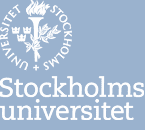Mall "DIVA - Författare, titel, år", enkel lista
Mall "DIVA - Författare, titel, år", detaljerad lista
| Författare | Titel | År |
|---|---|---|
|
Kätlin Aare
|
Respiratory patterns and turn-taking in spontaneous Estonian : Inhalation amplitude in multiparty conversations | 2015 |
|
Kätlin Aare,
Emer Gilmartin,
Marcin Włodarczak,
et al. |
Breath holds in chat and chunk phases of multiparty casual conversation | 2021 |
|
Kätlin Aare,
Pärtel Lippus,
Marcin Włodarczak,
et al. |
Creak in the respiratory cycle | 2018 |
|
Kätlin Aare,
Marcin Włodarczak,
Mattias Heldner
|
Backchannels and breathing | 2014 |
|
Kätlin Aare,
Marcin Włodarczak,
Mattias Heldner
|
Breath holds in spontaneous speech | 2020 |
Mall "DIVA", enkel lista
Mall "DIVA", detaljerad lista
Respiratory patterns and turn-taking in spontaneous Estonian : Inhalation amplitude in multiparty conversations
This thesis explores the relationship between inhalation amplitude and turn-taking in spontaneous multiparty conversations held in Estonian. Respiratory activity is recorded with Respiratory Inductance Plethysmography. The main focus is on how inhalation amplitude varies between the inhalations produced directly before turn onset compared to the following inhalations within the same speaking turn. The results indicate a significant difference in amplitude, realised mainly by an increase in inhalation end lung volume values. One of the possible functions of this pattern is to signal an intention of taking the conversational turn. Another could be a phrasing or grouping function connected to lower inhalation amplitudes within turns.
Breath holds in chat and chunk phases of multiparty casual conversation
Creak in the respiratory cycle
Creakiness is a well-known turn-taking cue and has been observed to systematically accompany phrase and turn ends in several languages. In Estonian, creaky voice is frequently used by all speakers without any obvious evidence for its systematic use as a turn-taking cue. Rather, it signals a lack of prominence and is favored by lengthening and later timing in phrases. In this paper, we analyze the occurrence of creak with respect to properties of the respiratory cycle. We show that creak is more likely to accompany longer exhalations. Furthermore, the results suggest there is little difference in lung volume values regardless of the presence of creak, indicating that creaky voice might be employed to preserve air over the course of longer utterances. We discuss the results in connection to processes of speech planning in spontaneous speech.
Backchannels and breathing
The present study investigated the timing of backchannel onsets within speaker’s own and dialogue partner’s breathing cycle in two spontaneous conversations in Estonian. Results indicate that backchannels are mainly produced near the beginning, but also in the second half of the speaker’s exhalation phase. A similar tendency was observed in short non-backchannel utterances, indicating that timing of backchannels might be determined by their duration rather than their pragmatic function. By contrast, longer non-backchannel utterances were initiated almost exclusively right at the beginning of the exhalation. As expected, backchannels in the conversation partner’s breathing cycle occurred predominantly towards the end of the exhalation or at the beginning of the inhalation.
Breath holds in spontaneous speech
This article provides a first quantitative overview of the timing and volume-related properties of breath holds in spontaneous conversations. Firstly, we investigate breath holds based on their position within the coinciding respiratory interval amplitude. Secondly, we investigate breath holds based on their timing within the respiratory intervals and in relation to communicative activity following breath holds. We hypothesise that breath holds occur in different regions of the lung capacity range and at different times during the respiratory phase, depending on the conversational and physiological activity following breath holds. The results suggest there is not only considerable variation in both the time and lung capacity scales, but detectable differences are also present in breath holding characteristics involving laughter and speech preparation, while breath holds coinciding with swallowing are difficult to separate from the rest of the data based on temporal and volume information alone.
Genvägar
Uppdateringar i manualen
- Kända fel och åtgärder 2021-08-31
- Nya riktlinjer för kategorisering med globala kategorier 2020-12-07







